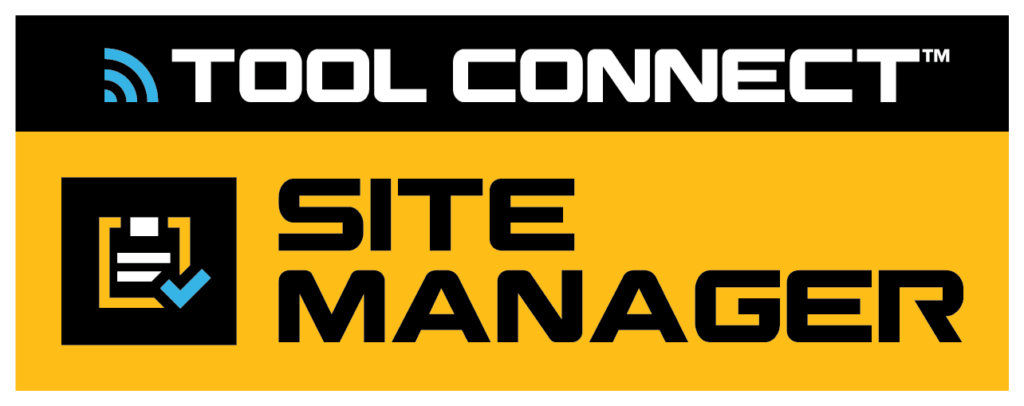Construction jobsites in 2023 resemble those in 1923, with manual bricklaying, paper blueprints, and scaffold towers. At $12 trillion, architecture, engineering, and construction (AEC) is one of the biggest industries in the world, but historically it has been among the slowest to digitize and innovate.
This, however, is changing fast: strong demand for infrastructure, a shortage of skilled labor, and increased stakeholder pressure for data transparency and integration are all accelerating digital adoption. As a result, the AEC tech ecosystem has experienced an explosion of investment and a wave of start-up launches. An estimated $50 billion was invested in AEC tech between 2020 to 2022, 85% higher than the previous three years. During the same period, the number of investment deals in the industry increased 30% to 1,229.
Important ways technologies are driving innovation in construction:
Building Information Modeling (BIM): BIM is a digital representation of a building or infrastructure’s physical and functional characteristics. It allows for collaborative design, visualization, and simulation of construction projects. BIM enhances communication and coordination among project stakeholders, reduces errors and rework, and enables better decision-making throughout the project lifecycle.
Robotics and automation: increasingly used in construction for bricklaying, concrete pouring, and material handling. Robots can perform repetitive and labor-intensive tasks with precision and speed, reducing manual labor requirements, improving productivity, and enhancing worker safety.
AR and VR technologies: transforming how construction projects are designed, planned, and executed. They enable immersive visualization, allowing stakeholders to experience virtual walkthroughs of buildings, test design options, identify clashes, and make informed decisions. AR and VR also support training, safety simulations, and remote collaboration.
The IoT connects hardware devices and equipment to the Internet, enabling data collection and communication. In construction, IoT applications include smart sensors and devices that monitor equipment performance, energy usage, site conditions, and worker safety. IoT-driven data insights improve equipment maintenance, optimize resource allocation, enhance safety, and enable predictive analytics.
3D printing, or additive manufacturing, allows for constructing complex and customized building components using digital designs to offer faster construction, reduced material waste, cost savings, and design flexibility. In some cases, 3D printing has been used to create structural elements, facades, and even entire buildings.
Drones and Aerial Imaging: Drones equipped with cameras or sensors capture aerial imagery and data, providing valuable insights for construction projects. They aid in site surveying, progress monitoring, inspections, and safety assessments.
Sustainable Technologies: Construction embraces technologies that promote sustainability and reduce environmental impact, which includes energy-efficient building materials, renewable energy systems, intelligent building management systems, and waste management solutions. These technologies enhance energy efficiency, reduce carbon footprint, and promote sustainable construction practices.
Below are featured Construction Technology solutions and how they’re reshaping the Construction Industry.
Optimizing design-to-fabrication-to-field workflows.
MSUITE is a cutting-edge software solution that revolutionizes fabrication management and drives efficiency throughout the project lifecycle. MSUITE’s value lies in its comprehensive suite of integrated tools and advanced analytics, empowering construction professionals to streamline operations, enhance collaboration, and maximize profitability. Here’s why MSUITE is the ultimate choice for your design-to-fabrication-to-field construction needs:
- End-to-End Fabrication Management: MSUITE seamlessly integrates critical processes such as estimating, scheduling, resource allocation, and financial management, providing a centralized platform to streamline operations and eliminate inefficiencies.
- Real-Time Data Insights: MSUITE harnesses the power of advanced analytics and real-time data to enable data-driven decision-making.
- Streamlined Collaboration: MSUITE enables real-time sharing of project information, document management, and streamlined communication channels, ensuring that all team members stay connected and aligned for increased efficiency.
- Advanced BIM Capabilities: MSUITE leverages the power of Building Information Modeling (BIM) to deliver enhanced project visualization, clash detection, and 3D modeling.
- Cost and Time Savings: By optimizing construction processes and streamlining workflows, MSUITE helps you save significant costs and time throughout the project lifecycle.
Seamless Integration and Scalability: MSUITE is designed to seamlessly integrate with existing construction software systems, allowing for a smooth transition and avoiding disruption to your current processes.
With MSUITE, construction professionals gain a competitive edge by harnessing the power of technology, data analytics, and streamlined collaboration. Experience increased productivity, improved project outcomes, and enhanced profitability with our comprehensive construction management solution.
Reducing carbon and labor costs in concrete sensors.
DEWALT Concrete Sensors offer a groundbreaking solution for construction professionals seeking to optimize concrete curing and monitoring processes. The value lies in our advanced sensor technology and comprehensive data analytics, empowering contractors to achieve superior concrete quality, enhance project efficiency, and mitigate risks. Here’s why DEWALT Concrete Sensors are the ultimate choice for your concrete monitoring needs:
- Accurate and Reliable Data: DEWALT Concrete Sensors provide precise, real-time data on crucial parameters such as temperature, humidity, and strength development within the concrete.
- Continuous Monitoring: With DEWALT Concrete Sensors, you can monitor concrete curing and strength development throughout the entire curing process to identify potential issues, such as inadequate curing or excessive moisture, early on, preventing costly rework and ensuring optimal concrete performance.
- Remote Monitoring and Alerts: Stay connected to your concrete projects anytime, anywhere, and receive notifications if critical thresholds are breached, enabling you to take timely action and avoid potential quality issues.
- Enhanced Quality Control: By closely monitoring concrete conditions, you can ensure compliance with industry standards and project specifications. Detect potential issues that can compromise strength, durability, or aesthetics, enabling you to take proactive measures and deliver high-quality concrete structures.
- Increased Efficiency and Cost Savings: Automating data collection and analysis streamlines operations, improves resource allocation, and saves costs associated with traditional concrete testing methods.
- Risk Mitigation and Documentation: Our sensors provide comprehensive data logging and historical records of concrete conditions, offering valuable documentation for project management and risk mitigation purposes. Track the curing progress, assess the impact of environmental factors, and maintain a detailed record of concrete performance, which can be crucial for project audits, compliance, and dispute resolution.
- Ease of Use: It’s user-friendly interface and intuitive software make setting up sensors, monitoring data, and generating reports easy, eliminating complexities and allowing for efficient data-driven decision-making.
DEWALT Concrete Sensors are revolutionizing concrete monitoring, enabling you to achieve optimal concrete quality, increase project efficiency, and reduce risks. Experience the power of advanced sensors and data analytics to transform your operations and deliver outstanding results.
Digitizing tool, equipment and asset tracking for enhanced inventory management.
DEWALT Site Manager is a comprehensive software solution to streamline and enhance construction project management. DEWALT Site Manager combines powerful features and intuitive interfaces to help contractors, project managers, and construction teams efficiently manage various aspects of their projects.
- Real-Time Collaboration: Users can create and share project schedules, assign tasks to team members, and track progress.
- Improved Documentation: Users can upload and store project documents, including drawings, specifications, and contracts, in a centralized and secure location to eliminate the need for manual paper-based document management.
- Resource Management: The software also includes features for resource management, enabling users to efficiently allocate equipment, tools, and materials to different tasks and track their usage.
- Financial Reports: DEWALT Site Manager provides a comprehensive view of project finances by allowing users to track costs, generate reports, and monitor budget allocations, helping project managers make informed decisions and ensure projects stay within budget.
- Improved Safety: Safety is an ongoing top concern for the trades, and DEWALT Site Manager addresses this by offering tools for safety management. Users can conduct safety inspections, record incidents, and track corrective actions, promoting a safer work environment.
- Software integration: The software also integrates with mobile devices, enabling users to access project information and perform various tasks. This mobility feature enhances productivity and allows real-time updates, even when team members are in the field.
DEWALT Site Manager provides a comprehensive solution for construction project management, offering features for collaboration, document management, resource allocation, financial tracking, safety management, and mobility. This software allows construction professionals to streamline their workflows, improve efficiency, and enhance project outcomes.
Robotics in the fab shop to improve welding processes, increasing productivity, and efficiency.
Novarc Technologies is a robotics company developing advanced welding automation solutions. The company focuses on delivering innovative robotic systems that improve welding processes, increase productivity, and enhance the overall efficiency of manufacturing operations. Here are a few featured highlights by Novarc Technologies:
- Advanced Robotic Welding: Their systems are designed to automate complex welding tasks, including those in heavy fabrication, construction, shipbuilding, and other industries.
- Collaborative Robotics: welding systems are engineered to work alongside human operators, complementing their skills and expertise while improving efficiency and output.
- Advanced Control Systems: These control systems enable real-time monitoring, feedback, and adaptive control, optimizing welding parameters to achieve optimal results while minimizing defects and rework.
- Artificial Intelligence and Machine Learning: Their systems can continuously learn and improve by analyzing vast amounts of welding data, improving process optimization, weld quality, and efficiency over time.
- Improved Welding Productivity and Quality: By automating repetitive and time-consuming tasks, manufacturers can significantly increase their output while maintaining consistent weld quality, reducing rework, and enhancing overall efficiency.
Novarc Technologies’ innovative welding automation solutions have garnered recognition and adoption across various industries. Their systems have demonstrated significant improvements in productivity, weld quality, and worker safety, contributing to the advancement of welding technology and automation in manufacturing.
Advancing automated saw systems to enhance precision and efficiency in cutting applications.
TigerStop saws integrate state-of-the-art technology to streamline the cutting process and improve woodworking, metalworking, plastics, and productivity.
- Automate Cuts: TigerStop saws can automate and control the positioning of the saw blade or cutting tool. They have a programmable stop system that accurately positions the material being cut, ensuring consistent and precise cuts every time. This automation eliminates the need for manual measurements and reduces human error, resulting in improved accuracy and increased productivity.
- Use with Various Cutting Tools: TigerStop saws are highly versatile and can be used with various cutting tools, including circular, chop, band, and miter saws. They can handle multiple materials, such as wood, aluminum, steel, plastic, and composites, making them suitable for diverse industries.
- Control System: The control system of TigerStop saws is user-friendly and intuitive. Operators can input the desired dimensions or cutting parameters through a digital interface, and the saw will automatically position the material accordingly. Some models even feature advanced software for complex cutting patterns, optimization, and integration with other machinery or computer systems.
- Increased Speed: TigerStop saws offer other advantages, such as increased speed and efficiency. These saws can significantly reduce production time and labor costs by eliminating manual measuring and repetitive tasks. The automation features also minimize material waste, as the cuts are consistently accurate and optimized.
- Various configurations: TigerStop saws come in various configurations to cater to different needs and budgets. From compact benchtop models suitable for small workshops to large industrial-grade systems capable of handling heavy-duty cutting requirements, there is a TigerStop saw to suit every application.
TigerStop saws are renowned for their precision, automation, and efficiency. By integrating cutting-edge technology with reliable construction, these saws have become valuable tools in many industries, revolutionizing how materials are cut and processed.
Going from model to fabrication and back without missing a beat.
PypeServer‘s suite of products helps fabricators – big and small, cut parts on the shop floor directly from BIM models and CAD designs. PypeServer’s Lyte software is seamlessly installed on almost any stop-cut saw, and PypeServer Enterprise runs the largest machines in the market. Lyte lets you cut parts directly from CAD and BIM using TigerStop, RazorGage, Kentucky Gauge, and Scotchman saws.
- Eliminate Manual process: PypeServer connects to leading fabrication machines to automatically feed cut data and perform the mundane/repetitive manual tasks automatically.
- Superior Manufacturability: After handoff, PypeServer gives the shop the opportunity to add root gaps and tweak designs for manufacturability. Nesting can be adjusted to account for pipe defects and to minimize material waste.
- End-to-End Process Optimization: Once the parts are cut, PypeServer automatically reports process timing data upstream to allow end-to-end process optimization. Handle change orders gracefully at any point in the process.
Drones have proven valuable tools in the construction industry, offering numerous benefits and applications.
SiteAware revolutionizes quality assurance of construction to eliminate costly rework. The Build-to-Plan™ platform generates real-time intelligence that finds deviations between construction plans and fieldwork so that you can achieve first-time-quality, reduce risk, and enable a new level of productivity.
Here are several ways in which drones are helping construction firms on a wide range of projects:
- Site Surveying and Mapping: Drones with high-resolution cameras or LiDAR (Light Detection and Ranging) sensors can quickly and accurately survey construction sites. They can capture aerial images, create 3D models, and generate topographic maps, providing valuable data for site planning, design, and project visualization.
- Inspections and Monitoring: Drones can access hard-to-reach or hazardous areas of construction sites, enabling efficient inspections of structures, roofs, facades, and infrastructure. Thermal cameras can identify issues such as heat leaks or anomalies in buildings and monitor progress throughout construction.
- Construction Progress Monitoring: Drones can regularly capture aerial imagery or videos of construction sites to monitor progress and compare against project timelines. This helps project managers track milestones, identify delays, and make data-driven decisions to ensure projects stay on schedule.
- Safety and Risk Management: Drones can enhance safety on construction sites by providing real-time aerial surveillance and monitoring. They can identify potential safety hazards, monitor compliance with safety protocols, and help prevent accidents.
- Inventory Management: Drones can conduct inventory audits, measure stockpile volumes, and assist in supply chain management, improving efficiency and reducing manual effort.
- Communication and Collaboration: Aerial footage captured by drones can be easily shared with project stakeholders, architects, and clients, enhancing transparency, and facilitating better decision-making.
- Marketing and Visualization: Drones capture stunning aerial footage that provides a unique perspective on completed projects or renderings, showcasing the construction company’s capabilities and attracting potential clients.
- Environmental Impact Assessment: Drones can assist in environmental impact assessments by collecting data on vegetation, waterways, or terrain changes. This data helps construction companies minimize the environmental footprint of their projects and adhere to regulatory requirements.
By leveraging the capabilities of drones, construction companies can improve productivity, enhance safety, reduce costs, and streamline various aspects of their operations. However, it’s essential to comply with local regulations, obtain necessary permits, and ensure proper training and certification of drone operators to maximize their benefits and adhere to legal and safety standards.
Reality capture software helps teams effortlessly document the jobsite.
OpenSpace Capture is the leading reality capture software in the industry. With their revolutionary solution, you can effortlessly document your site from preconstruction to handover and operation, creating a collaborative, as-built record of the building. Experience unparalleled speed and simplicity as it generates Google Street-style views of your jobsite. The essential advantage of Open Space’s solution is that it requires minimal additional labor and zero infrastructure. Below are some features and benefits:
- Improved Project Documentation: Document the project with progress photos, all setup to capture on the jobsite automatically.
- Reduced Labor efforts: What used to take a jobsite superintendent several hours can now be done automatically using our placed 360 Degree cameras.
- Improved Inspections/Job walks: All inspections/job walks now come with a 360-degree video that is easily captured by attaching a camera to a hard hat.
- Remote collaboration: More easily collaborate with remote teams with live job walks and improved project documentation.
Conclusion
Technological advancements continue to reshape the construction industry, enabling faster project delivery, improved quality, cost savings, and enhanced sustainability. Embracing these innovative technologies empowers construction companies to stay competitive, increase productivity, and drive positive change and improved financial results.















